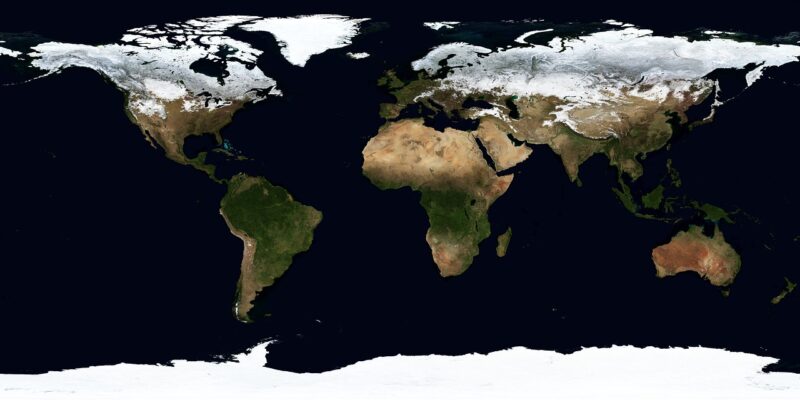
Earth is a planet of diverse climate zones, each with its unique characteristics and influences. Understanding these climate zones is essential not only for scientists and geographers but also for anyone interested in the natural world and how it affects our daily lives. In this article, we will explore the variety of climate zones found on Earth, the factors that shape them, and how they influence the flora, fauna, and human activities within each region.
1. Introduction to Climate Zones
Climate zones are defined as regions of the Earth that share similar weather conditions over an extended period. These zones are typically classified based on annual temperature and precipitation patterns, leading to the creation of various climate classification systems. The most widely used classification is the Köppen climate classification, which divides the world into five main climate zones:
- Tropical Climate (A): Regions near the equator with warm temperatures and high rainfall throughout the year.
- Dry Climate (B): Areas with low precipitation, which can be hot (deserts) or cold (steppes).
- Temperate Climate (C): Regions with moderate temperatures and seasonal variations in precipitation.
- Continental Climate (D): Found in large landmasses, with significant temperature variations between summer and winter.
- Polar Climate (E): Cold regions where temperatures are consistently low, including tundra and ice cap climates.
Understanding these climate zones helps explain why certain plants and animals thrive in specific regions, as well as how different cultures adapt their lifestyles to fit their environment.
2. Factors That Shape Climate Zones
Multiple factors influence the development of climate zones on Earth, including:
2.1. Latitude
Latitude plays a crucial role in determining temperature and sunlight exposure. Areas near the equator receive direct sunlight year-round, leading to higher temperatures and tropical climates. As you move toward the poles, sunlight becomes more oblique, resulting in cooler temperatures and altered climate zone characteristics.
2.2. Altitude
Altitude affects climate as well. Higher elevations tend to have cooler temperatures, which can result in distinct climate zones even within a relatively small geographical area. The Andes Mountains in South America and the Himalayas in Asia showcase a range of climate zones due to their varying altitudes.
2.3. Ocean Currents
Ocean currents influence coastal temperatures and precipitation patterns. Warm currents, like the Gulf Stream, can moderate winter temperatures, while cold currents can lead to cooler coastal weather. This results in diverse climate conditions along coastlines, even in regions that are geographically close.
2.4. Proximity to Water Bodies
Regions near large bodies of water typically have milder climates due to the moderating effect of water. Water holds heat longer than land, leading to cooler summers and warmer winters, while inland areas may experience more extreme temperature fluctuations.
2.5. Topography
The physical landscape also affects climate. Mountain ranges can create rain shadows, where one side receives abundant precipitation while the other remains dry. This phenomenon contributes to desert and semi-arid regions located on the leeward side of mountains.
3. Exploration of Climate Zones
Now, let’s delve deeper into the specific climate zones on Earth:
3.1. Tropical Climate (A)
The tropical climate zone is characterized by warm temperatures and high humidity. This climate zone is typically found between the Tropic of Cancer and the Tropic of Capricorn.
– Key Characteristics:
– Average monthly temperatures are above 18°C (64°F) year-round.
– High annual rainfall, often exceeding 2,000 mm (78 inches).
– Flora and Fauna:
– Dense forests known as tropical rainforests, featuring a rich diversity of plant and animal species, including elephants, monkeys, and exotic birds.
– Example Locations:
– Amazon Rainforest, Southeast Asia, and Central Africa.
3.2. Dry Climate (B)
Dry climates can be further divided into arid (desert) and semi-arid (steppe) regions.
– Key Characteristics:
– Low annual precipitation, often below 250 mm (10 inches) in deserts.
– High evaporation rates, leading to dry conditions.
– Flora and Fauna:
– Sparse vegetation, featuring cacti, succulents, and hardy shrubs. Animals include reptiles, rodents, and adapted mammals like camels.
– Example Locations:
– Sahara Desert, Arabian Peninsula, and Great Plains.
3.3. Temperate Climate (C)
The temperate climate zone experiences distinct seasons, with warm summers and mild winters.
– Key Characteristics:
– Moderate annual temperatures, with significant seasonal variation.
– Average precipitation, often distributed evenly throughout the year.
– Flora and Fauna:
– Deciduous forests, grasslands, and Mediterranean vegetation. Common animals include deer, foxes, and various bird species.
– Example Locations:
– Eastern United States, Europe, and parts of East Asia.
3.4. Continental Climate (D)
Continental climates have great temperature extremes between seasons due to their location away from oceans.
– Key Characteristics:
– Warm to hot summers and cold winters, with temperature ranges often exceeding 25°C (45°F) between seasons.
– Varied precipitation, with increased amounts in summer.
– Flora and Fauna:
– Mixed forests, grasslands, and various wildlife, including bears, wolves, and eagles.
– Example Locations:
– Central Canada, parts of Russia, and the American Midwest.
3.5. Polar Climate (E)
Polar climates are characterized by low temperatures, with harsh conditions predominating throughout the year.
– Key Characteristics:
– Long, cold winters and short, cool summers.
– Precipitation mainly falls as snow, often less than 250 mm (10 inches) annually.
– Flora and Fauna:
– Limited vegetation, mainly comprising mosses, lichens, and hardy grasses. The animal life includes polar bears, seals, and migratory birds.
– Example Locations:
– Antarctica, Greenland, and Arctic regions.
4. The Impact of Climate Zones on Human Activities
Climate zones profoundly affect human lifestyles and activities.
– Agriculture: Different crops thrive in various climate zones, influencing the types of agriculture practiced in a region. For example, tropical regions excel in growing rice, while temperate zones are suitable for wheat.
– Architecture: In colder climates, buildings are designed to retain heat, while in warmer areas, homes feature ventilation and shading to stay cool.
– Tourism: Climate influences tourism patterns, with warmer climates attracting visitors for beach activities, while winter sports flourish in colder regions.
– Transportation and Infrastructure: Climate zones impact the construction and maintenance of infrastructure, such as roads, bridges, and buildings that must endure specific weather conditions.
5. Conclusion
The variety of climate zones on Earth is a testament to our planet’s complex and dynamic nature. Each zone offers a unique combination of weather patterns, biodiversity, and human adaptations. By understanding how climate zones are shaped and the effects they have on our environment, we can better appreciate the intricate relationship between nature and humanity. As we face the challenges of climate change and environmental degradation, it becomes increasingly important to protect and preserve these diverse climates and the ecosystems they support.
In summary, the classification of climate zones not only helps us understand our world better but also aids in planning for sustainable development and conservation initiatives that benefit both people and the planet.








